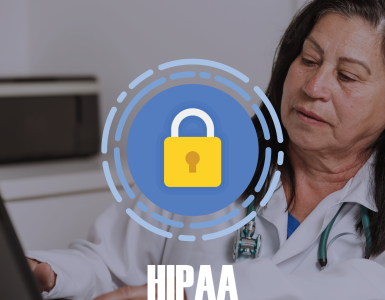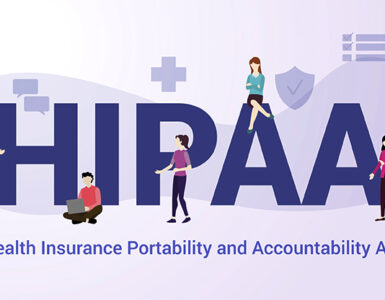The prime agenda of the HIPAA is to protect the privacy of the patient’s health information and simplify health insurance transactions between different service providers and patients. To accomplish this, it lays special emphasis on the conversion of medical records of patients from paper to electronic format. The aim is to digitize patient health information so that it can be easily managed by different health entities.
Any covered healthcare entity, which fails to protect the patient’s health data as per HIPAA compliance norms will invite strict penalties and criminal convictions. As health transactions are done on the internet, health service entities must provide a very secure access system so that genuine users can safely transact while hostile intruders are kept at bay.
In Biometrics technology unique physical and behavioral characteristics like fingerprints, Iris Retina, and signature, keystroke pattern, and voice print, respectively are embedded in the system to create a secure and unique identification for each and every user.
For a health service provider, it is of paramount importance to select the right biometric system, which is easy to implement and use. Below are some important features, which such an access system should have:
- It should be easily deployable. The devices should be cost-effective and sport user-friendly features so that users can easily access the services.
- The system should allow the service provider to quickly gather the user data and compare it to an accepted benchmark.
- Provision for a proper training backup on installation, integration, and optimization of such devices.
- The high degree of accuracy. The false-acceptance rate (FAR) and false–rejection rate (FJR) used in the biometric measurement standards should balance each other so that the crossover error rate (CER) is less. A lower CER points to higher accuracy in the system.
- Customized to the environment. Inpatient admission, nursing, billing, and administration fingerprint scan will work well but will fail in the clinics and labs where latex hand gloves are used.
- The system should support interoperability so that the data from the different biometric devices can be exchanged and compared with each other. This also provides a greater security assurance by integrating two or more different types of devices to create a strong and tamperproof access system.
The right biometric system provides the desired level of security without creating any operational hassles for both users, patients, and health service providers. This very well serves the objectives of the HIPAA compliance norms, which are, security and simplification of patient health transactions.
The right biometric technology provides increased security at reduced costs.
Read more on HIPAA compliance at, www.empowerelearning.com




